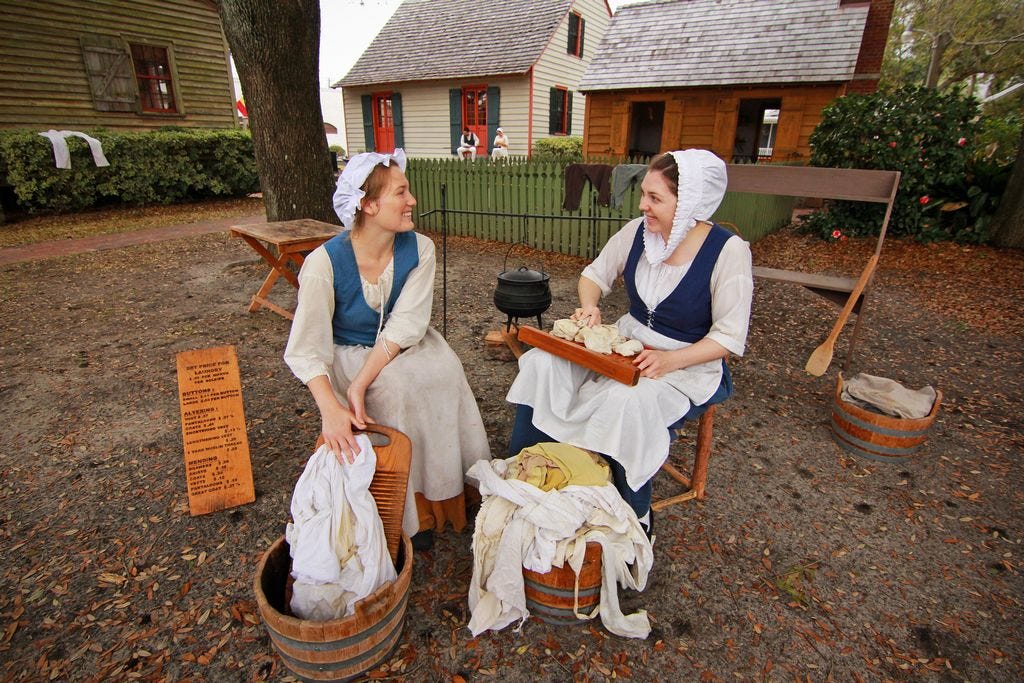
The early 1900s will come to life on a 39-acre parcel near Benny Russell Park in Pace. Authentic equipment and people dressed in fashions of the era and demonstrating some of the activities and work of the time are all plans the University of West Florida Historic Trust has for the area.
According to a press release from the school, the land is a gift from the Alice Amelia Hall Trust with caveats requiring educational use and a nature trail. UWF plans to create a historic farmstead and outdoor museum. The exhibit will be similar to the UWF Historic Pensacola Village firsthand colonial experience, as it will demonstrate what everyday life was like on a rural Santa Rosa County farm during the 19th century.
Bob Overton is the Executive Director of the Historic Trust. He said the concept will ideally follow the one of Historic Pensacola Village, putting “people in costume, showing experiential learning, having participation. (We’ll) talk about canning and preserving food, maybe animal husbandry, animals as part of the farm, and division of labor. Children had jobs, and there were typical male/female roles.”
Local historian, Nathan Woolsey, expanded on the history the preserve will present. Most homesteads, he said, were only about 160 acres at most since plows and other equipment were powered by horses and mules. The cash crop at the time was cotton. Families, he said, produced about one to two bales a day.
Homesteaders took root in Santa Rosa County after the Civil War, according to Woolsey. With the county so heavily forested the trees had to be cleared to make way for incoming agrarians. “The pioneer homesteaders were called stump ranchers. When they got their land, it was covered in pine stumps so they had to dig them up before farming.” He noted stump removal was an industry in itself around this time.
Woolsey said homesteading in SRC saw its peak around 1900 when a lot of family farms began, those glory years lasting until World War 1. People tried farming just about everything, he said. In the 1920s, he said, Milton was briefly known as ‘Satsuma land’ because Satsuma orange groves lined Highway 90 until heavy freezes killed them.
Homesteads started dying out between the twenties and thirties, according to Woolsey. There were several nails in this coffin: the Great Depression, the boll weevil, disinterested youth, and growing industry.
The boll weevil and the Great Depression devastated crop prices in the first attack. The second came from the children of these early farms. “Kids would spend a childhood picking cotton and raising hogs,” Woolsey said. “Life was hard, so when children had the opportunity to move away, they did, to work in Pensacola and the naval air station.”
While Santa Rosa County was always industrial since with so much lumber business, but post World War II, Woolsey said work was available in several industries such as chemical with big players like Monsanto. There were also other opportunities such as the railroad, turpentine distilling, and government jobs like working with the road departments.
Right now, the Robinson/Hall Family Farm and Preserve is in early planning stages. Overton said, “One of the first steps is getting all that down on paper.” This also includes, as Overton put it, the “less sexy portions (like) converting this site from single family farmstead to something that can accommodate huge crowds.” This means plumbing, parking, and other infrastructure elements according to Overton. He also said they may construct a replica barn to house classrooms and accommodate modern usage.
Funding will be another step along the way. “We’ll have to get recurring funds and get creative.” Overton said some may come from state funding, though that is “never a guarantee.”
Keep up with the Press Gazette to see how this local piece of history is brought back to life. Readers will also find out when UWF will hold public input meetings and periods to get some feedback.
This article originally appeared on Santa Rosa Press Gazette: UWF plans living history on 39-acre gift
